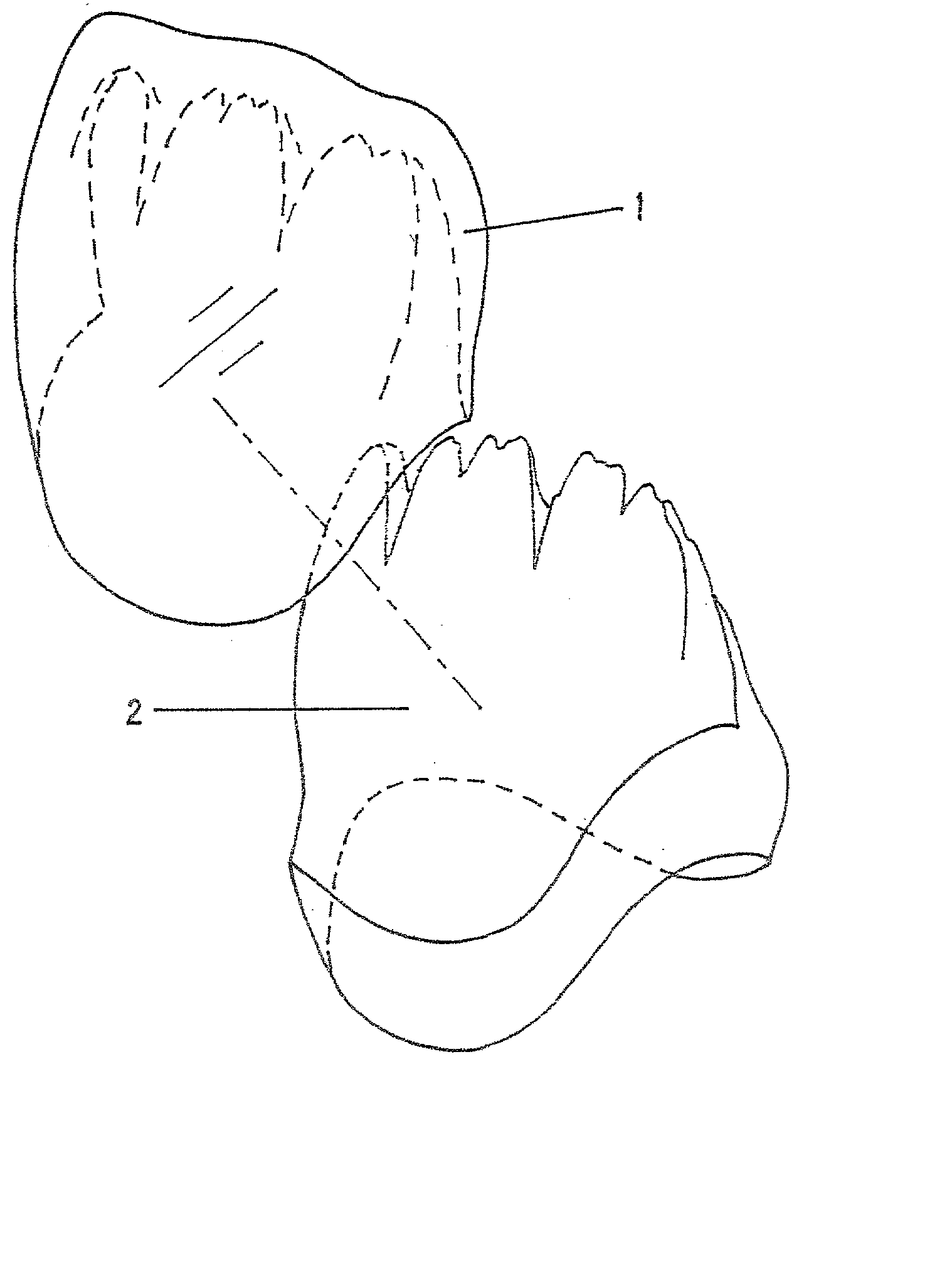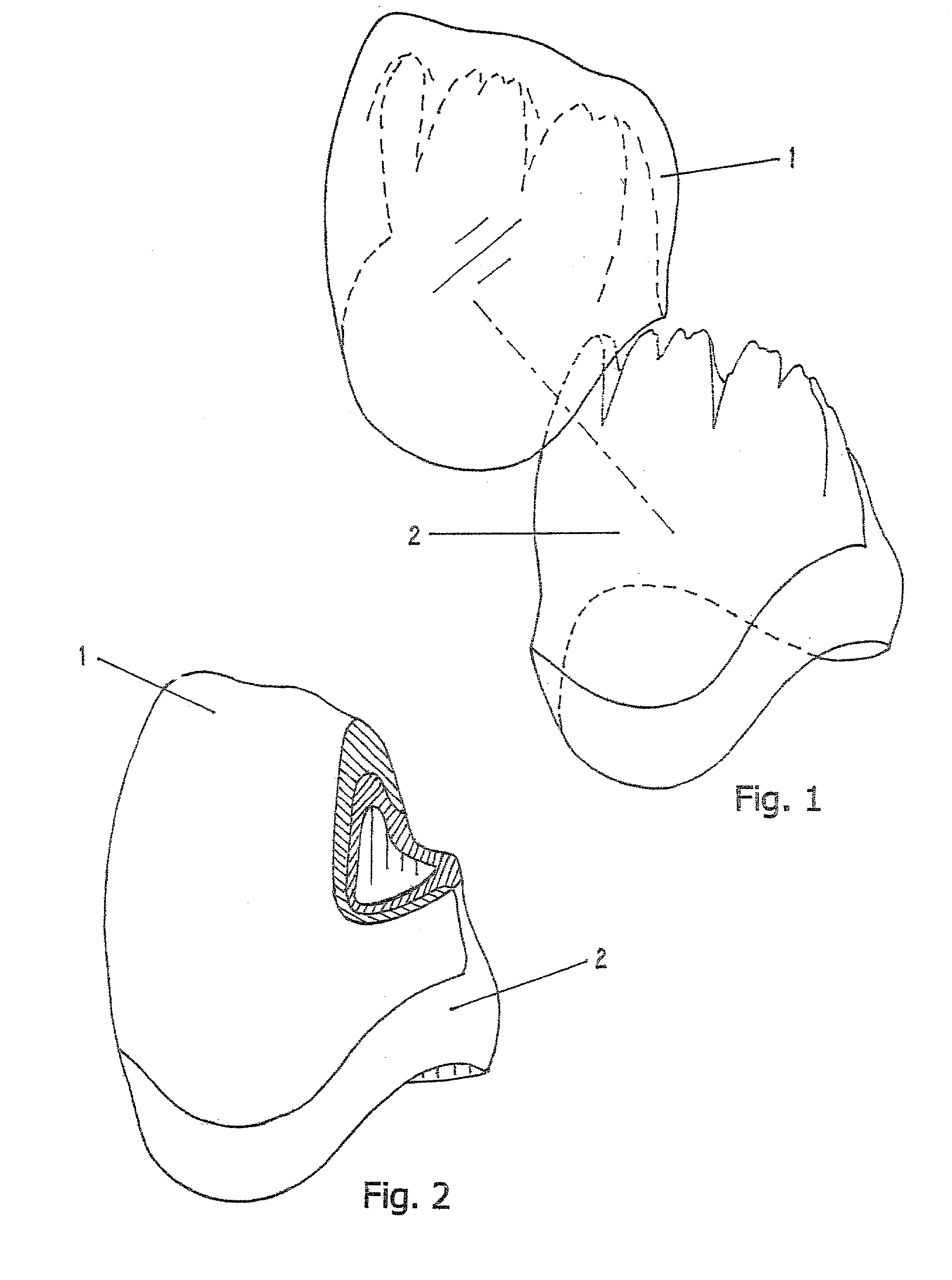Back casting prefabricated incisal veneers
a technology of incisal veneers and back casting, which is applied in the direction of impression caps, teeth capping, dental surgery, etc., can solve the problems of lack of blending of two or more colors, lack of monochromatic look, and limited shade of such devices,
- Summary
- Abstract
- Description
- Claims
- Application Information
AI Technical Summary
Problems solved by technology
Method used
Image
Examples
Embodiment Construction
[0037] A preferred embodiment of the present invention is illustrated in FIG. 1 (exploded view), FIG. 2 (cutaway view), FIGS. 3A through 3C (embodiments of crown forms), and FIG. 4 (completed wax buildup). In FIGS. 1 through 2 and FIGS. 3A through 33B, various crown forms are illustrated using prefabricated incisal veneers 1 in facial / incisal and buccal / occlusal shell patterns, and pre-applied wax 2 which is applied up to the gingival contour and including some or all of the desired lingual anatomy as an aid to quick and more uniform fabrication of wax buildups. Soft wax is applied 3 to position the crown form onto a model 4 and complete the wax buildup (FIG. 4). A sprue is attached to the wax buildup (not shown), and the wax buildup is removed from the model 4 for investing and burnout to create a lost-wax mold, wherein the incisal veneer 1 is cast in place using press ceramic.
[0038] FIGS. 5 and 6--Additional Embodiments
[0039] In an additional embodiment of my invention, soft wax i...
PUM
| Property | Measurement | Unit |
|---|---|---|
| Size | aaaaa | aaaaa |
| Shape | aaaaa | aaaaa |
| Glass structure | aaaaa | aaaaa |
Abstract
Description
Claims
Application Information
 Login to View More
Login to View More - R&D
- Intellectual Property
- Life Sciences
- Materials
- Tech Scout
- Unparalleled Data Quality
- Higher Quality Content
- 60% Fewer Hallucinations
Browse by: Latest US Patents, China's latest patents, Technical Efficacy Thesaurus, Application Domain, Technology Topic, Popular Technical Reports.
© 2025 PatSnap. All rights reserved.Legal|Privacy policy|Modern Slavery Act Transparency Statement|Sitemap|About US| Contact US: help@patsnap.com



